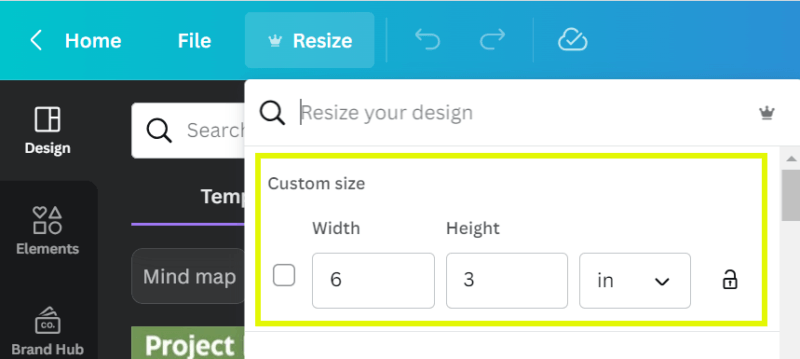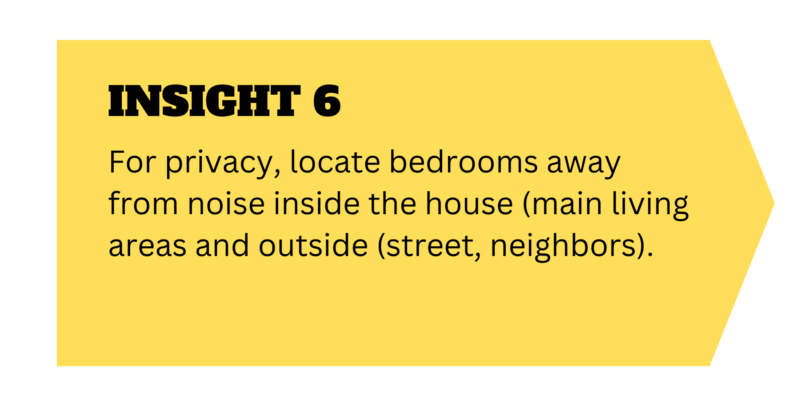Help Participants Process Instructional Video
Research tells us that too often, people don’t watch instructional video, or watch only some (portions or videos) when they are part of a digital course (Guo, 2014). It also tells us that videos are often easy to watch without any significant mental processing (Brame, 2016). These two issues can create significant difficulties when using instructional video as learning content, and they need to be solved. Luckily, there are evidence-based solutions that are straightforward!
If people don’t watch our videos or don’t mentally process them, they can’t learn from them. Learning requires active mental processing using our limited cognitive resources (working memory) to create new knowledge by integrating new information with information stored in long-term memory for later use (Mayer, 2021).
In the last three parts of this video series, I’ve discussed choosing tools for digital instruction and when using video makes the most sense, how we learn from video, and evidence-based design principles for instructional video. In this article, I discuss evidence-informed ways to improve watching and processing of instructional video, to make video a better learning tool. I begin with common ways we can design video for deeper mental processing, and then I explore a commonly discussed evidence-informed tactic for encouraging watchers to pay attention and think through the insights in the video.
Design Elements Can Make Processing Easier
Particular video features have been shown to help viewers find and focus on what’s important in the video. For example, research shows that demonstration videos can sometimes be better than live demos when we use specific visual elements, such as freeze-framing, highlighting, or enlarging specific areas of the video to make important parts of the demo easier to see (Kestin, et al., 2020). In a video about making changes to an image using an image editing program, for example, we might zoom in to the specific part of the video we are modifying. These video tactics make harder to see parts of the demo easier to visualize, which helps people see and understand what is occurring.

Image 1: Signaling which part of the video being discussed via annotation and zooming
Kestin, et al., (2022) discusses the use of specific video design principles to create what he calls “enhanced visuals.” These come from Mayer’s (2021, as discussed in detail in the previous article of the series) signaling, temporal contiguity, and modality principles. As a reminder, these principles are:
Signaling Principle
This is used for highlighting critical content. We can indicate critical insights in narration, by saying, “This next piece is critical, so you should pay close attention…” or by adding annotations that let viewers know what part of the screen you are discussing, as shown in the image above. We can also let people know when we are discussing critical insights by pulling them out onscreen, much like print articles use pull quotes. For example, in a video about custom building a home, we may pull out something the narrator says that we want to emphasize, before showing home plans where the bedroom locations emphasize privacy.

Image 2: Video pullout from narration
Temporal Contiguity Principle
This involves playing the narration and the corresponding graphics at the same time. In some videos, the related narrated explanation comes before (or after) showing the related image. Mental effort is increased when the narration and image are not shown together, because viewers must remember the explanation to understand the graphic shown on another screen. For example, let’s say the previous screen narration ends by saying, “On the next screen, you’ll see an error shown on our travel report. Determine which of the buttons shown you would expect to see for this error.”

Image 3: Pollout from narration
Bottomline: it would be far less confusing for viewers to hear that narration while looking at the travel report screen shown above, so they don’t have to remember what was said earlier.
Modality Principle
This involves using narration, rather than text, to explain graphics. We cannot read explanatory text and comprehend the graphic being explained by that text at the same time, so it’s more effective to explain with narration while viewing the graphic.
Using these principles means video visual content is more carefully aligned with the corresponding narration and visual cues, such as annotations to emphasize critical content. Kestin, et al., (2022) also embedded questions throughout the videos (the use of questions is discussed in detail in the next section). These visuals and instructional elements result in better learning outcomes (as measured by testing) from videos that include enhanced visuals and embedded questions than from videos with either or neither of these elements.
Research also shows that the ability to control video playback to skip or rewatch specific sections helps reduce cognitive load and anxiety with difficult and complex content (Chen, 2012). In the next section, I’ll discuss how having participants answer questions about the video encourages more attention and processing of video content.
Prompting Deeper Processing Of Instructional Video Content
In the earlier articles discussing my video research explorations, I show that instructional video can be quite beneficial, especially when designed well. One of the important issues I discuss is the critical need for participants to process video. Without adequate processing, they cannot learn much.
How do we help people mentally process video? One of the most common answers I see in research evidence is adding worthwhile questions for participants to answer. Questions can be provided to students to answer while watching, or they can be embedded into the video for viewers to interact with.
Research shows that inserting questions throughout a video encourages active processing of the video’s content and thereby improves learning outcomes, such as remembering video content and the ability to use it later. Active processing via questioning likely comes from various sources, including:
- Signaling which video content is critical and promoting note-taking while watching (Szpunar, et al., 2013)
- Retrieving watched information from video content (Karpicke and Blunt, 2011; Szpunar, et al., 2008)
- Aiding spending of more time on video content (Vural, 2013)
- Improving motivation and attention (Szpunar, et al., 2014)
- Improving later test results (Szpunar, et al., 2013, 2014; Lavigne and Risko, 2018)
Numerous video editing tools allow for the addition of questions. I personally use Camtasia for this purpose, one of my clients uses HP5, and there are other tools for this purpose too. The fact that there are many different video editing tools with this capability indicates that vendors are aware of the benefits of embedding video questions.

Image 4: Screen capture showing adding a question to a video using TechSmith’s Camtasia
Embedding questions in video is one of the ways that we create what is called “interactive video.” The interactions we can add to video are growing and are likely to expand. For example, with common video editing applications, we can allow viewers to select sections to watch or review. We can add stopping points, where we ask viewers to complete a task (for instance, perform a calculation or make a prediction). We can allow the viewer to open a related activity. We can embed questions that help people think through the critical points in the video. Interactive video is beneficial for prompting thinking and processing actions, such as recalling information from the video or making decisions from video content. These actions can make learning much more likely.
Writing Good Questions
It is worthwhile and not complicated to enhance instructional videos to make mental processing more likely. In many cases, I embed questions and viewers must answer the question and gain feedback before progressing with the video. If it isn’t possible to add questions to a video, it is relatively simple to provide those questions via interactive tools (such as a quiz tool) after videos are shown or by providing a questionnaire sheet. The benefit of using digital tools is that it can be easier to have viewers answer before proceeding.
I have been working with the Office of Wildland Fire in the U.S. Department of the Interior. In a recent project, we added questioning in short video-based courses, so wildland firefighters and administrators get more from these videos. The following video on the National Fire Danger Rating System (NFDRS) is one of the ones I worked with recently, and it is freely available to view on YouTube.

Image 5: Screen from NFDRS video
How do we select questions to embed into our videos or provide to participants in another manner (such as print)? When adding questions to video, I look for the most critical insights to understand and remember from each video’s content, and then create multiple-choice questions to assess whether viewers understood them.
Here are just a few of the multiple-choice questions (without the answer choices) I helped to create to be used within this NFDRS video or in the course assessment:
- How do wildland firefighters use the National Fire Danger Rating System (NFDRS)?
- Which of the following does the fire danger rating scientifically predict?
- What does the Ignition Component (IC) measure?
- What does the Energy Release Component (ERCC) measure?
- When fighting a wildfire, how does a firefighter know what that day’s Burning Index (BI) means to them and their crew?
Got It?
The information in this article is complex so I’ll (hopefully) help you remember key points with some multiple-choice questions.
1. Why is it important for instructional video viewers to mentally process the content of the video? Select the best answer.
a) Mental processing helps viewers avoid getting sidetracked by “seductive details.”
b) Mental processing helps video developers learn to be more concise and streamlined.
c) Mental processing helps viewers remember more critical video insights.
2. What are “enhanced visuals,” according to Kestin, et al., (2022)? Select the best answer.
a) “Enhanced visuals” show what’s important and use synchronized narration.
b) “Enhanced visuals” work better than other visuals because they stand out to viewers.
c) “Enhanced visuals” are moving rather than still images, such as animations and videos.
3. What does Mayer’s signaling principle tell us to do to make video content easier to process? Select the correct answer.
a) Highlight video content that is most critical to remember/use.
b) Use narration, rather than text, to explain onscreen graphics.
c) Play narration and show corresponding graphics together.
4. What does Mayer’s temporal contiguity principle tell us to do to make video content easier to process? Select the correct answer.
a) Highlight video content that is most critical to remember/use.
b) Use narration, rather than text, to explain onscreen graphics.
c) Play narration and show corresponding graphics together.
5. Why does research suggest that we add questions that ask about important video content? Select the best answer.
a) Questions asking about important video content help viewers avoid “seductive details.”
b) Questions asking about important video content help viewers process critical video content.
c) Questions asking about important video content help viewers remember the video images.
6. Which two of these mental processing mechanisms help questions improve learning outcomes? Select the two correct answers.
a) Questions increase viewers’ motivation to learn.
b) Questions require viewers to retrieve important video content.
c) Questions help viewers locate desired video content.
d) Questions make it easier for viewers to remember video images.
7. How does “interactive video” help people mentally process video content? Select the best answer.
a) It helps viewers interact with other learners (social interaction)
b) It helps viewers judge which content is important versus unimportant.
c) It prompts specific viewer mental actions such as information recall.
8. Which of the following tactics will help you select good questions to use? Select the best answer.
a) Use questions that help people assess which content is important versus unimportant.
b) Use questions that assess the most critical things to remember and important insights.
c) Use questions that assess whether viewers remember critical moving image content.
Answers To “Got It?” Questions
Answers to multiple-choice questions: 1(c), 2(a), 3(a), 4(c), 5(b), 6(a) and (b), 7(c), 8(b)
References:
- Brame, C. J. 2016. “Effective educational videos: Principles and guidelines for maximizing student learning from video content.” CBE Life Sciences Education 15 (4): 1-6.
- Chen, Y. T. 2012. “A study of learning effects on e-learning with interactive thematic video.” Journal of Educational Computing Research 47 (3): 279-92.
- Guo, P. J., J. Kim, and R. Robin. 2014. “How video production affects student engagement: An empirical study of MOOC videos.” In L@S ’14 Proceedings of the First ACM Conference on Learning at Scale, New York: ACM, 41–50.
- Haagsman, M. E., K. Scager, J. Boonstra, C. Margot, and M. C. Koster. 2020. “Pop-up questions within educational videos: Effects on students’ learning.” Journal of Science Education and Technology, 29: 713–24.
- Karpicke, J.D., and J. R. Blunt. 2011. “Retrieval practice produces more learning than elaborative studying with concept mapping.” Science 331 (6018): 772-75.
- Kestin, G., K. Miller, L. S. McCarty, K. Callaghan, and L. Deslauriers. 2020. “Comparing the effectiveness of online versus live lecture demonstrations.” Physical Review Physics Education Research 16 (1): 013101-1-01301-6.
- Kestin, G., and K. Miller. 2022. “Harnessing active engagement in educational videos: Enhanced visuals and embedded questions.” Physical Review Physics Education Research 18 (1): 010148-1-010148-9.
- Lavigne, E., and E. F. Risko. 2018. “Optimizing the use of interpolated tests: The influence of interpolated test lag.” Scholarship of Teaching and Learning in Psychology 4 (4): 211–21.
- Mayer, R. E. 2020. Multimedia learning. 3rd ed. Cambridge: Cambridge University Press.
- Mayer, R. E. 2021. “Evidence-based principles for how to design effective instructional videos.” Journal of Applied Research in Memory and Cognition, 10: 229–24.
- Mayer, R. E., L. Fiorella, and A. Stull. 2020. “Five ways to increase the effectiveness of instructional video.” Educational Technology Research and Development 68: 837–52.
- Papadopoulou, A., and G. Palaigeorgiou. 2016. “Interactive video, tablets and self-paced learning in the classroom: Preservice teachers perceptions.” In Proceedings of 13th International Conference on Cognition and Exploratory Learning in Digital Age, International Association for Development of the Information Society, 195-202.
- Shank, P. 2022. “Creating Better Video For Learning: When Should We Use Video?“
- Shank, P. 2022. “Creating Better Video For Learning: Processing And Learning From Video.”
- Shank, P. 2023. “Creating Better Video For Learning: Design Principles For Mentally Processing Video.”
- Szpunar, K. K., K. B. McDermott, and L. H. Roediger. 2008. “Testing during study insulates against the buildup of proactive interference.” Journal of Experimental Psychology: Learning Memory and Cognition 34: 1392–99.
- Szpunar, K. K., N. Y. Khan, and D. L. Schacter. 2013. “Interpolated memory tests reduce mind wandering and improve learning of online lectures.” Proceedings of the National Academy of Sciences 110 (16): 6313–17.
- Szpunar, K. K., H. G. Jing, and D. L. Schacter. 2014. “Overcoming overconfidence in learning from video-recorded lectures: Implications of interpolated testing for online education.” Journal of Applied Research in Memory and Cognition 3 (3): 161–64.
- Vural, O. F. 2013. “The impact of a question-embedded video-based learning tool on e-learning.” Educational Sciences: Theory & Practice 13 (2), 1315-23.
- Wouters, P., H. K. Tabbers, and F. Paas. 2007. “Interactivity in video-based models.” Educational Psychology Review 19 (3): 327–42.
- Zhang, D., L. Zhou, R. O. Briggs, and J. F. Nunamaker. 2006. “Instructional video in e-learning: Assessing the impact of interactive video on learning effectiveness.” Information & management 43 (1): 15-27.
- Zolkwer, M. B., R. Hidalgo, and B. F. Singer. 2023. “Making educational videos more engaging and enjoyable for all ages: An exploratory study on the influence of embedded questions.” International Journal of Lifelong Education 42 (3): 283-97.
Image Credits:
- All images within the body of the article are created/supplied by the author unless otherwise stated.
